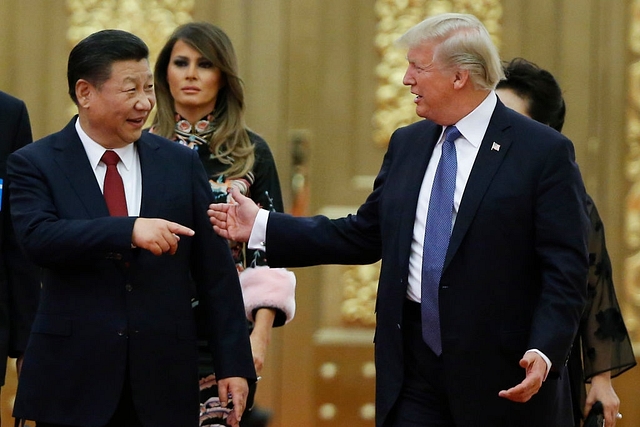
US Proposes Export Controls On AI, Robotics And Emerging Tech To Stave Off Chinese Challenge
The United States (US) Department Of Commerce has proposed a new export restrictions regime on advanced technology sectors, ranging from artificial intelligence to robotics, as part of move to protect national security interest and secure American dominance in these cutting-edge sectors, South China Morning Post has reported.
The proposed move signals continued resolve on part of the US to crack down on intellectual property theft by foreign nations including China. China has been trying to catch up with the American dominance in these strategic technologies.
The Department of Commerce identified the following 14 emerging technologies that are important to the US’ national security and for which effective controls can be implemented to avoid a challenge to the US leadership in the areas.
- Biotechnology, such as: (i) Nanobiology; (ii) Synthetic biology; (iii) Genomic and genetic engineering; or (iv) Neurotech
- Artificial intelligence (AI) and machine learning technology, such as: (i) Neural networks and deep learning (e.g., brain modelling, time series prediction, classification); (ii) Evolution and genetic computation (e.g., genetic algorithms, genetic programming); (iii) Reinforcement learning; (iv) Computer vision (e.g., object recognition, image understanding); (v) Expert systems (e.g., decision support systems, teaching systems); (vi) Speech and audio processing (e.g., speech recognition and production); (vii) Natural language processing (e.g., machine translation); (viii) Planning (e.g., scheduling, game playing); (ix) Audio and video manipulation technologies (e.g., voice cloning, deepfakes); (x) AI cloud technologies; or (xi) AI chipsets
- Position, Navigation, and Timing (PNT) technology
- Microprocessor technology, such as: (i) Systems-on-Chip (SoC); or (ii) Stacked Memory on Chip
- Advanced computing technology, such as Memory-centric logic
- Data analytics technology, such as: (i) Visualization; (ii) Automated analysis algorithms; or (iii) Context-aware computing
- Quantum information and sensing technology, such as: (i) Quantum computing; (ii) Quantum encryption; or (iii) Quantum sensing
- Logistics technology, such as: (i) Mobile electric power; (ii) Modeling and simulation; (iii) Total asset visibility; or (iv) Distribution-based Logistics Systems (DBLS)
- Additive manufacturing (e.g., 3D printing)
- Robotics, such as: (i) Micro-drone and micro-robotic systems; (ii) Swarming technology; (iii) Self-assembling robots; (iv) Molecular robotics; (v) Robot compliers; or (vi) Smart Dust
- Brain-computer interfaces, such as: (i) Neural-controlled interfaces; (ii) Mind-machine interfaces; (iii) Direct neural interfaces; or (iv) Brain-machine interfaces
- Hypersonics, such as: (i) Flight control algorithms; (ii) Propulsion technologies; (iii) Thermal protection systems; or (iv) Specialized materials (for structures, sensors, etc.)
- Advanced materials, such as: (i) Adaptive camouflage; (ii) Functional textiles (e.g., advanced fiber and fabric technology); or (iii) Biomaterials
- Advanced surveillance technologies, such as Faceprint and voiceprint technologies.
The proposal has been put forward for public consultation and comment. The new legal restrictions will come in to force after that the consultative process is complete.